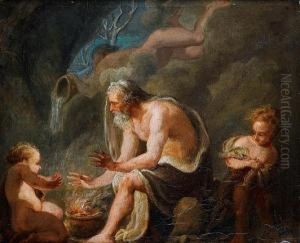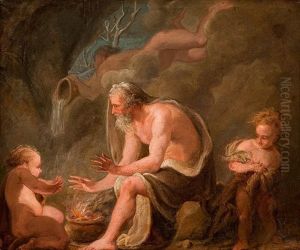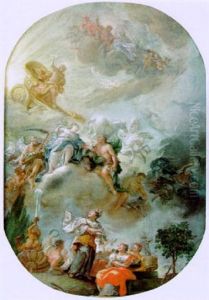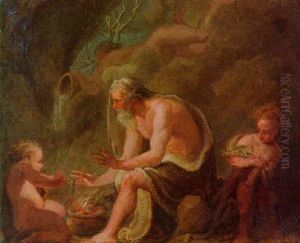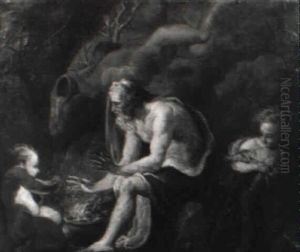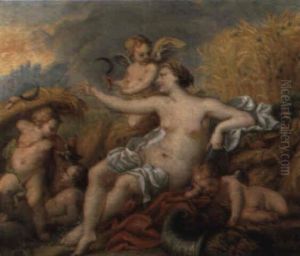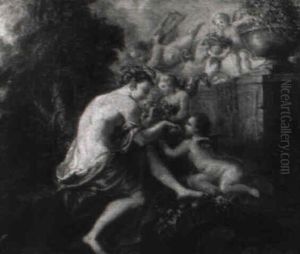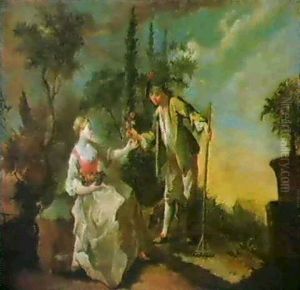Johannes Baptist Zimmermann Paintings
Johannes Baptist Zimmermann was a prominent German painter and stucco plasterer of the Baroque period, renowned for his significant contributions to the development of Rococo style in Southern Germany. Born on January 3, 1680, in Gaispoint, a district of Wessobrunn, Bavaria, Zimmermann stemmed from a family deeply entrenched in the arts, which had a profound influence on his career path. His work is characterized by its intricate detail, dynamic compositions, and the vibrant interplay of light and shadow, which were revolutionary in the context of early 18th-century European art.
Zimmermann's education in the arts began under the tutelage of his family, particularly drawing inspiration and skill from the established Wessobrunn School, known for its mastery in stucco work and its significant influence on Baroque architecture and art in the region. His talent soon took him beyond the confines of his hometown, allowing him to work on various prestigious projects across Germany. One of his most famous contributions is the decoration of the Wieskirche (Pilgrimage Church of Wies), a UNESCO World Heritage Site, which stands as a masterpiece of Bavarian Rococo.
Throughout his career, Zimmermann moved between various German states, including Bavaria, where he executed commissions for churches, abbeys, and palaces. His work not only included monumental frescoes and altar pieces but also extended to the creation of elaborate stucco decorations, which are considered some of the finest examples of Rococo art. His ability to blend architecture, painting, and sculptural elements into a harmonious whole was unmatched, making him a sought-after artist of his time.
Zimmermann's artistic legacy is not limited to his masterful stucco work and frescoes but also includes his role in the education and influence of future generations of artists. His collaboration with his brother, Dominikus Zimmermann, also a renowned architect and stuccoist, resulted in some of the period’s most celebrated architectural and artistic achievements. Johannes Baptist Zimmermann's death on March 16, 1758, in Munich, marked the end of an era but left a lasting impact on the Rococo style and the development of Baroque art in Germany. His works continue to be studied and admired for their artistic beauty and historical significance.
